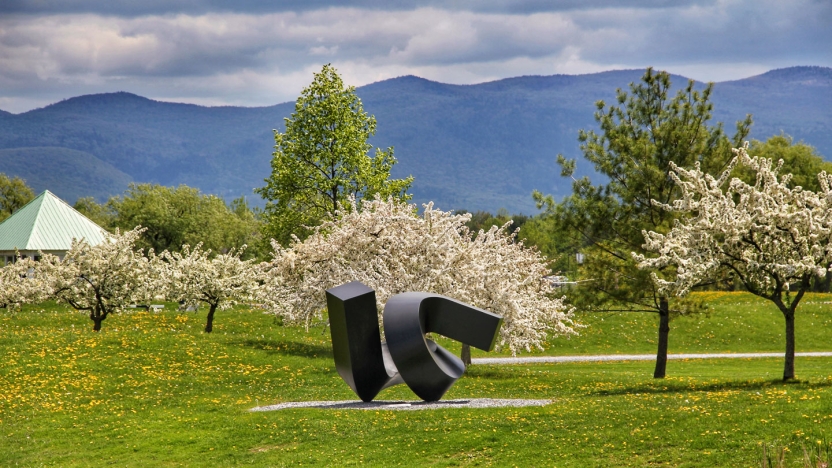Public Art

The Middlebury College campus is home to one of the most important public art collections of any American liberal arts college.
Middlebury’s distinguished campus collection of public art includes nearly 30 works—mostly sculpture—by nationally or internationally known artists.
Each work is an accessioned object in the collection of the Middlebury College Museum of Art, and each piece in the collection of public works on campus is installed, maintained, and interpreted by the Committee on Art in Public Places (CAPP), which is chaired by the Director of the Museum.
We encourage you to learn more about the works on campus and the artists who created them, to interact with the collection in meaningful ways, and to engage members of the Committee on Art in Public Places with active dialogue, questions, concerns, and praise.
CAPP’s Mission
In the fall of 1994 the President and Board of Trustees of Middlebury College adopted a “One Percent for Art” policy that was recommended by an ad-hoc Committee on Art in Public Places (CAPP).
This decision set aside one percent of the cost of any renovation or new construction at the college for the purchase, installation, maintenance, and interpretation of works of art publicly displayed on campus. With the adoption of this policy, which came within two years of the completion of the Center for the Arts and the Museum of Art, the Trustees formalized the existence of CAPP and signaled that the arts would come to play an increasingly important role in Middlebury’s institutional identity.
The Trustees’ charge to CAPP was clear: expand the educational mission of the Museum and the History of Art and Architecture and Studio Art programs by placing on campus compelling works of high quality; make works accessible to the non-specialist through interpretative materials; elicit gifts and loans that enhance the aesthetic and educational mission of the arts; involve a broad representation of the community in the selection, installation, and interpretation process; and ensure the security and care of these objects.
Since its inception, the committee—comprised of faculty, students, administrators, and trustees of the college—has diligently pursued its agenda, evaluating proposed gifts and prioritizing prospective sites for art projects. In addition, CAPP has established fiscal policies and future goals and informed and educated the community at large about the works of art on campus. As a result, the Middlebury community and visitors alike can now enjoy one of the most important campus-wide sculpture collections of any American liberal arts college.
Walking Tour
A walking tour of Middlebury’s public sculpture collection is the perfect way to enjoy one of the most beautiful college campuses in the country and to be inspired by some amazing art.
Snapped an art tour selfie worthy of Buzzfeed? Be sure to tag us @middartmuseum or #MiddArtSelfie. Better yet, follow us on Instagram and you can post your photo gems there yourself.
Friendly Reminder: Please don’t climb or sit on the works of art (with three exceptions: Scott Burton’s Bench and Table, Michael Singer’s Garden of the Seasons, and Jenny Holzer’s Selections from Truisms—these are made to be utilitarian). The one-of-a-kind works in the collection are expensive to maintain, and we appreciate your help in ensuring that they will endure for many generations.

Guided Tour
Want an individual guided tour of the collection? On several occasions John Hunisak, Professor of History of Art and Architecture and the original chair of the Committee on Art in Public Places, has led groups on a walking tour of Middlebury’s campus sculpture. Recently he recorded an audio version of this popular tour, and it is available on our YouTube channel as a series of videos. If you have a web-enabled phone, you can watch and listen to each track as you explore each work first hand.
Additionally, for those who want to see where the various works are located on campus, a Story Map version of the tour, with brief informational texts for most works, is available here.
